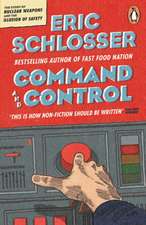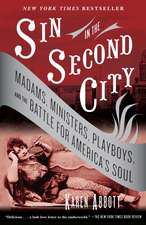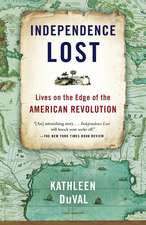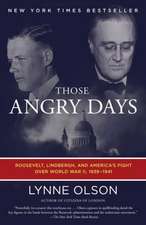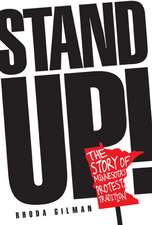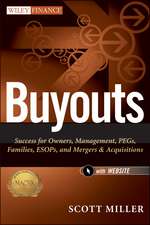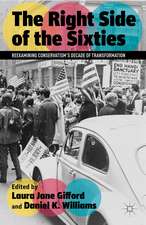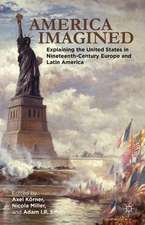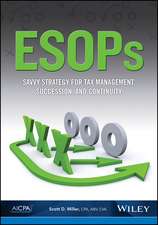The President and the Assassin: McKinley, Terror, and Empire at the Dawn of the American Century
Autor Scott Milleren Limba Engleză Paperback – 17 iun 2013
In 1901, as America tallied its gains from a period of unprecedented imperial expansion, an assassin’s bullet shattered the nation’s confidence. The shocking murder of President William McKinley threw into stark relief the emerging new world order of what would come to be known as the American Century. The President and the Assassin is the story of the momentous years leading up to that event, and of the very different paths that brought together two of the most compelling figures of the era: President William McKinley and Leon Czolgosz, the anarchist who murdered him.
The two men seemed to live in eerily parallel Americas. McKinley was to his contemporaries an enigma, a president whose conflicted feelings about imperialism reflected the country’s own. Under its popular Republican commander-in-chief, the United States was undergoing an uneasy transition from a simple agrarian society to an industrial powerhouse spreading its influence overseas by force of arms. Czolgosz was on the losing end of the economic changes taking place—a first-generation Polish immigrant and factory worker sickened by a government that seemed focused solely on making the rich richer. With a deft narrative hand, journalist Scott Miller chronicles how these two men, each pursuing what he considered the right and honorable path, collided in violence at the 1901 Pan-American Exposition in Buffalo, New York.
Along the way, readers meet a veritable who’s who of turn-of-the-century America: John Hay, McKinley’s visionary secretary of state, whose diplomatic efforts paved the way for a half century of Western exploitation of China; Emma Goldman, the radical anarchist whose incendiary rhetoric inspired Czolgosz to dare the unthinkable; and Theodore Roosevelt, the vainglorious vice president whose 1898 charge up San Juan Hill in Cuba is but one of many thrilling military adventures recounted here.
Rich with relevance to our own era, The President and the Assassin holds a mirror up to a fascinating period of upheaval when the titans of industry grew fat, speculators sought fortune abroad, and desperate souls turned to terrorism in a vain attempt to thwart the juggernaut of change.
Praise for The President and the Assassin
“[A] panoramic tour de force . . . Miller has a good eye, trained by years of journalism, for telling details and enriching anecdotes.”—The Washington Independent Review of Books
“Even without the intrinsic draw of the 1901 presidential assassination that shapes its pages, Scott Miller’s The President and the Assassin [is] absorbing reading. . . . What makes the book compelling is [that] so many circumstances and events of the earlier time have parallels in our own.”—The Oregonian
“A marvelous work of history, wonderfully written.”—Fareed Zakaria, author of The Post-American World
“A real triumph.”—BookPage
“Fast-moving and richly detailed.”—The Buffalo News
“[A] compelling read.”—The Boston Globe
One of Newsweek’s 10 Must-Read Summer Books
Preț: 150.11 lei
Nou
Puncte Express: 225
Preț estimativ în valută:
28.72€ • 30.72$ • 23.95£
28.72€ • 30.72$ • 23.95£
Carte disponibilă
Livrare economică 27 martie-10 aprilie
Preluare comenzi: 021 569.72.76
Specificații
ISBN-13: 9780812979282
ISBN-10: 0812979281
Pagini: 422
Ilustrații: 16-PP PHOTO SECTION
Dimensiuni: 140 x 208 x 28 mm
Greutate: 0.41 kg
Editura: Random House Trade
ISBN-10: 0812979281
Pagini: 422
Ilustrații: 16-PP PHOTO SECTION
Dimensiuni: 140 x 208 x 28 mm
Greutate: 0.41 kg
Editura: Random House Trade
Recenzii
“[A] panoramic tour de force . . . Miller has a good eye, trained by years of journalism, for telling details and enriching anecdotes.”—The Washington Independent Review of Books
“Even without the intrinsic draw of the 1901 presidential assassination that shapes its pages, Scott Miller’s The President and the Assassin [is] absorbing reading. . . . What makes the book compelling is [that] so many circumstances and events of the earlier time have parallels in our own.”—The Oregonian
“A marvelous work of history, wonderfully written.”—Fareed Zakaria, author of The Post-American World
“A real triumph.”—BookPage
“Fast-moving and richly detailed.”—The Buffalo News
“[A] compelling read.”—The Boston Globe
One of Newsweek’s 10 Must-Read Summer Books
“Even without the intrinsic draw of the 1901 presidential assassination that shapes its pages, Scott Miller’s The President and the Assassin [is] absorbing reading. . . . What makes the book compelling is [that] so many circumstances and events of the earlier time have parallels in our own.”—The Oregonian
“A marvelous work of history, wonderfully written.”—Fareed Zakaria, author of The Post-American World
“A real triumph.”—BookPage
“Fast-moving and richly detailed.”—The Buffalo News
“[A] compelling read.”—The Boston Globe
One of Newsweek’s 10 Must-Read Summer Books
Notă biografică
As a correspondent for The Wall Street Journal and Reuters news agency, Scott Miller spent nearly two decades in Asia and Europe, reporting from more than twenty-five countries. His articles—covering fields as varied as the Japanese economic collapse, the birth of a single European currency, French culinary traditions, and competitive speed knitting—have also appeared in The Washington Post and the Far Eastern Economic Review, among others. He has been a contributor to CNBC and Britain’s Sky News. Miller holds a master’s degree in international relations from the University of Cambridge and now lives in Seattle with his wife and two daughters.
Extras
1
TEMPLE OF MUSIC
They streamed among the manicured flower beds and dewy lawns of Delaware Park that early September morning in Buffalo, New York, a portrait of America in the Gilded Age. Women in full-length skirts and tight-fitting corsets in the fashion of the iconic Gibson Girl shaded themselves with parasols. The men, seeking relief from the sun with jauntily perched straw boaters, fingered coins deep in their pockets, confident in their jobs. Children in sailor suits skipped and laughed and pulled their parents along as fast as they could. The smoky aroma of grilling bratwurst, the echo of chirping piccolos and booming tubas, the bellow of an elephant, all signaled they had nearly reached the grounds of the Pan-American Exposition of 1901.
As the crowds drew nearer, a series of pillars, each topped with a horse and rider, could be discerned through the trees. Beyond them stood massive domed buildings in red and yellow, preceded by the stout Triumphal Bridge. The view was capped by the signature structure of the Expo, the 389-foot-high Electric Tower, lit with power generated by Niagara Falls twenty-five miles away. John M. Carrère, the Expo's lead architect, had carefully orchestrated the scene so that "the spectator, as he approaches the Exposition, will see it develop gradually until he reaches the Bridge, when the entire picture will appear before him and almost burst upon him." Once inside the 350-acre park, visitors marveled at every sort of attraction: a mock Japanese village, a Trip to the Moon exhibit where midgets served green cheese, and, of course, the pachyderm, a nine-ton specimen decorated by Queen Victoria for its service with the British army in Afghanistan.
This was an especially exciting day. The Buffalo papers were reporting that William McKinley, beloved president of the United States, would meet members of the public at the Temple of Music at 4 p.m. The previous day, a record 116,000 people had crowded through the gates to see him deliver what many considered one of his finest speeches, and the prospect of actually exchanging a handshake or a brief word was an experience not to be missed. Such one-on-one encounters were a favorite of the president. Meeting with people individually, he projected a natural sincerity and warmth. So much time did McKinley spend in receiving lines that he perfected his own handshake, the "McKinley grip," to prevent cramping. When confronted with a long reception line, he made a point of extending his hand first and clasping the other's fingers so he couldn't be squeezed back. Then he would grab hold of his visitor's elbow with his left hand and deftly move him along, clocking up to fifty people a minute. "Everyone in that line has a smile and a cheery word," he once said. "They bring no problems with them; only good will. I feel better after the contact."
But plans for this particular meet-and-greet had left McKinley's staff feeling uneasy. The event had been well publicized and raised serious security issues. George B. Cortelyou, the president's personal secretary, had twice removed the Temple of Music reception from McKinley's schedule, and the president had twice demanded that it be reinstated. Though McKinley was the most popular president since Abraham Lincoln four decades earlier, pockets of dangerous radicals lurked in many cities. Only weeks before, his Secret Service agent George Foster, who looked the part of a professional sleuth with his derby hat and a cigar clenched between his teeth, had chased off a shadowy stranger from the McKinleys' private home in Canton, Ohio. Responding to pleas to be more cautious, the president conceded only to drawing his living room shades at night. Publishing tycoon William Randolph Hearst also tormented McKinley's inner circle with vicious attacks on the president. On April 10, 1901, his New York Journal printed an editorial that read in part: "If bad institutions and bad men can be got rid of only by killing, then the killing must be done."
Cortelyou's nerves had been put even more on edge when, on the evening of September 4, 1901, the special three-car train the president and his wife were riding in pulled into the Terrace Station overlooking Lake Erie in Buffalo. Cannons set up by the Coast Guard to salute McKinley had been placed too near the tracks and, when fired, produced a thunderous report that shattered eight windows on the train and sent shards of glass flying inside. In a brief panic on the station platform, a dozen or so people, their minds quickly racing to the most likely assailant, shouted "Anarchists!"
The reaction was understandable. The notorious exploits of anarchists had become, in the minds of many citizens, a very real and horrifying threat to the American way of life. Anarchist newspapers printed directions for making explosives at home and preached the downfall of the U.S. government. Radical believers of the political philosophy that rejected authority in any form had committed a sickening stream of terrorist attacks on European kings and heads of state. In the United States, anarchists had been convicted of bombing the police and nearly succeeded in murdering the manager of the nation's largest steel company. The president, however, had never been one to worry about his own security and brushed aside pleas that he limit his exposure to the public. "No one would wish to hurt me," he chuckled.
On the evening of August 31, 1901, a slightly built young man entered the barroom of John Nowak's saloon at 1078 Broadway on Buffalo's east side and asked for a room. Clad in a gray suit with a black shoestring tie, he carried a telescope-shaped bag in one hand and a brown hat with a yellow ribbon in the other. He struck Nowak as a "fair sort of man" and possessed a dreamy look. The guest paid the rate of two dollars a week. "What name shall I write on the receipt?" Nowak asked. "John Doe," the man replied. Nowak, accustomed to guests of questionable breeding, thought it somewhat odd but didn't care what he called himself as long as he paid in advance. Nowak asked Frank Walkowiak, a clerk at the hotel who was studying law, to show the man to a room on the second floor. Walkowiak was more curious than his boss. "What made you say John Doe?" he asked as they trudged upstairs.
"Well, I'll tell you, I'm a Polish Jew and I didn't like to tell him or he wouldn't keep me in the house." Pressing the point, Walkowiak asked the guest his real name. "Nieman, Fred Nieman....I'm going to sell souvenirs."
Nobody could figure out what the man who called himself Nieman was really doing in Buffalo. He generally rose early and left the hotel for the day. In the evening he would return with a collection of newspapers tucked under his arm-the Express, the Courier, the Times, the Commercial-and head straight to his room. He occasionally bought a cigar or a good whiskey, not the cheap five-cent shots, and stopped once or twice to watch a card game in the barroom, but he hardly ever spoke. The only time anyone paid him any attention was one morning when he noisily searched for a water pitcher, disturbing a retired German army officer trying to sleep in a nearby room.
Stuffed deep in his coat pocket, however, was one artifact that indicated a keen interest in world affairs-a neatly folded and well- worn newspaper clipping about the assassination of Italian king Umberto I. An Italian American named Gaetano Bresci, an editor of an anarchist newspaper in New Jersey, had murdered the monarch a year earlier. Nieman read it carefully. Sometime during the first week of September he stopped by Walbridge Hardware at 316 Main Street and asked to see a silver-plated Iver Johnson .32-caliber revolver-the same model that Bresci had used against Umberto I. At $4.50, the weapon was priced well above the other handguns that ran closer to $1.50, but he couldn't resist acquiring the premium model. Back in his hotel room, he loaded the weapon with five Smith & Wesson cartridges and practiced wrapping the gun and his right hand in a white handkerchief.
At fifty-eight, McKinley was still handsome enough for his looks to be a campaign asset. His square jaw and strong cheekbones projected an air of confidence and purpose that suited an increasingly ambitious nation. His large head, some political friends thought, resembled that of Napoléon Bonaparte, and they took to referring to him as such. In figure and form McKinley was very much in keeping with amply portioned men of the day. At a scant five feet, six and a half inches-he made a point of insisting the last half inch be recorded-he sometimes seemed that large around. He might have shed a few pounds, but exercise, other than a brisk stroll in the evenings, had never been a priority. Several years before, McKinley had tried to take up golf but gave it up: too much walking.
McKinley's most distinguishing feature, however, was his piercing dark eyes, eyes that conveyed a genuine goodness of spirit. "The habitual expression of the face is one of gravity and kindness," the Review of Reviews wrote in 1896. "If the phrase did not sound too sentimental, the fittest words to characterize McKinley's look would be a sweet seriousness." McKinley, the magazine continued, always had a kind word for secretaries or servants and would see off visitors to the door of his Canton home to warn them about the steps. Longtime Republican stalwart and diplomat John Hay would write years later to a friend, "The president was one of the sweetest and quietest natures I have ever known among public men." Journalists, who had the opportunity to see the president on a daily basis from desks set up near his second- floor office, were likewise struck by McKinley's unfailing affability. Frequently stopping for brief chats, one hand in a pants pocket, the other twirling his glasses, he would ask after any who were missing that day and inquire about their health.
McKinley awoke the morning of September 6, 1901, in an energetic mood. Staying at the stately home of Expo president John G. Milburn, he rose early and made certain he was dressed to the teeth: a boiled shirt, iron-starched collar and cuffs, black satin cravat, pique vest, pinstriped trousers, and frock coat. Into his pockets he stuffed enough trinkets to fill a small jewelry box, including a gold watch and pencil, a wallet, $1.20 in small change, three knives, nine keys (several loose, others on two rings), a pair of gloves, and three handkerchiefs, because it was supposed to be a warm day. At 7 a.m., much to the consternation of his security detail, McKinley set off on a twenty-minute walk along Delaware Avenue, one of the most beautiful streets in Buffalo, enjoying the air and the fine homes. Invigorated by the exercise, he and his wife, Ida, then departed on a sightseeing trip to Niagara Falls, where he clambered about like a boy. His hosts, eager to please their esteemed guest, had arranged for a hearty lunch at the International Hotel and left enough time in his schedule for the president to cap the midday meal with a favorite cigar. By midafternoon, he had boarded his train of parlor cars for the trip back to the Expo, relaxing as farmland and fruit trees passed outside his window.
At the Temple of Music, the main concert hall of the Expo, staff had been preparing all morning for the president's arrival. Security and crowd control were top concerns but seemed to have been addressed. Louis Babcock, a Buffalo attorney and grand marshal of the Exposition, had arranged chairs to form a wide aisle to direct people from the east entrance to the dais and then to corral them out the Temple's south doorways. Babcock's men had also constructed a wooden blind behind the dais to protect the president from the rear, upon which they hung a large American flag. Potted bay trees and other small plants were collected from around the Expo and placed on the edge of the stage, where Secret Service agents were to stand as they studied those in line for strange behavior or a hidden weapon. Before getting anywhere near the president, visitors would have to file between two columns of soldiers who were also ordered to scrutinize each individual. At noon, their work complete, Babcock, Buffalo attorney James L. Quackenbush, and another fair organizer gathered for a lunch of sandwiches and pilsner beer, pleased with their preparations. Referring to Theodore Roosevelt, the ambitious vice president, Quackenbush was confident enough to quip: "It would be Roosevelt's luck to have McKinley shot today."
As the three lingered over their meal, a line began to form at the Temple's east entrance, spilling out onto the Esplanade. Well-wishers balanced on swollen feet for hours under a searing sun, avoiding the temptation of the comfortable chairs in the nearby Pabst restaurant where a seltzer and lemon sold for thirty cents. The afternoon was so warm and humid that by three o'clock the Expo ambulance would pick up three cases of heat exhaustion on the fairgrounds.
If Nieman was suffering from the heat, he kept it to himself and arrived early enough to secure a place near the front of the line. He looked, some later said, like a tradesman or mechanic on holiday, though he hardly stood out. Waiting just in front of him was a dark- haired Italian-looking man. Directly behind was James Parker, a slender six-foot-four African-American waiter from Atlanta. Naturally gregarious, Parker tried once or twice to strike up a conversation with Nieman but was rebuffed.
Shortly before four o'clock, McKinley's Victorian carriage pulled up to the Temple of Music and he emerged still unseen by the crowds of people that waited for him at the other entrance. The Temple, which from a distance resembled a red, yellow, and blue Fabergé egg, was an impressive structure. Able to accommodate an audience of more than two thousand, it hosted famous musicians playing daily concerts. Striding toward the dais, the music-loving president might have noticed the building's impressive pipe organ, an $18,000 Emmons Howard that was one of the largest ever made. Shown to his place, McKinley turned to his security men and gave the order: "Let them come." On cue, organist William J. Gomph coaxed the massive organ to life with a tasteful Bach sonata. The doors to the east entrance were thrown open and excitement rippled through the waiting crowd, many murmuring in hushed tones as they shuffled along on the pine floors.
The first to reach the president was Dr. Clinton Colegrove of Holland, New York. "George Washington, Abraham Lincoln, and President McKinley," he declared.
Several children followed. "To every child, the president bent over, shook hands warmly and said some kind words," wrote a young newspaper reporter, John D. Wells. One boy broke from his mother's hand to dash to the president's side. His horrified mother arrived seconds later but McKinley, who loved children, brushed off the breach of protocol and complimented the boy's enthusiasm.
From the Hardcover edition.
TEMPLE OF MUSIC
They streamed among the manicured flower beds and dewy lawns of Delaware Park that early September morning in Buffalo, New York, a portrait of America in the Gilded Age. Women in full-length skirts and tight-fitting corsets in the fashion of the iconic Gibson Girl shaded themselves with parasols. The men, seeking relief from the sun with jauntily perched straw boaters, fingered coins deep in their pockets, confident in their jobs. Children in sailor suits skipped and laughed and pulled their parents along as fast as they could. The smoky aroma of grilling bratwurst, the echo of chirping piccolos and booming tubas, the bellow of an elephant, all signaled they had nearly reached the grounds of the Pan-American Exposition of 1901.
As the crowds drew nearer, a series of pillars, each topped with a horse and rider, could be discerned through the trees. Beyond them stood massive domed buildings in red and yellow, preceded by the stout Triumphal Bridge. The view was capped by the signature structure of the Expo, the 389-foot-high Electric Tower, lit with power generated by Niagara Falls twenty-five miles away. John M. Carrère, the Expo's lead architect, had carefully orchestrated the scene so that "the spectator, as he approaches the Exposition, will see it develop gradually until he reaches the Bridge, when the entire picture will appear before him and almost burst upon him." Once inside the 350-acre park, visitors marveled at every sort of attraction: a mock Japanese village, a Trip to the Moon exhibit where midgets served green cheese, and, of course, the pachyderm, a nine-ton specimen decorated by Queen Victoria for its service with the British army in Afghanistan.
This was an especially exciting day. The Buffalo papers were reporting that William McKinley, beloved president of the United States, would meet members of the public at the Temple of Music at 4 p.m. The previous day, a record 116,000 people had crowded through the gates to see him deliver what many considered one of his finest speeches, and the prospect of actually exchanging a handshake or a brief word was an experience not to be missed. Such one-on-one encounters were a favorite of the president. Meeting with people individually, he projected a natural sincerity and warmth. So much time did McKinley spend in receiving lines that he perfected his own handshake, the "McKinley grip," to prevent cramping. When confronted with a long reception line, he made a point of extending his hand first and clasping the other's fingers so he couldn't be squeezed back. Then he would grab hold of his visitor's elbow with his left hand and deftly move him along, clocking up to fifty people a minute. "Everyone in that line has a smile and a cheery word," he once said. "They bring no problems with them; only good will. I feel better after the contact."
But plans for this particular meet-and-greet had left McKinley's staff feeling uneasy. The event had been well publicized and raised serious security issues. George B. Cortelyou, the president's personal secretary, had twice removed the Temple of Music reception from McKinley's schedule, and the president had twice demanded that it be reinstated. Though McKinley was the most popular president since Abraham Lincoln four decades earlier, pockets of dangerous radicals lurked in many cities. Only weeks before, his Secret Service agent George Foster, who looked the part of a professional sleuth with his derby hat and a cigar clenched between his teeth, had chased off a shadowy stranger from the McKinleys' private home in Canton, Ohio. Responding to pleas to be more cautious, the president conceded only to drawing his living room shades at night. Publishing tycoon William Randolph Hearst also tormented McKinley's inner circle with vicious attacks on the president. On April 10, 1901, his New York Journal printed an editorial that read in part: "If bad institutions and bad men can be got rid of only by killing, then the killing must be done."
Cortelyou's nerves had been put even more on edge when, on the evening of September 4, 1901, the special three-car train the president and his wife were riding in pulled into the Terrace Station overlooking Lake Erie in Buffalo. Cannons set up by the Coast Guard to salute McKinley had been placed too near the tracks and, when fired, produced a thunderous report that shattered eight windows on the train and sent shards of glass flying inside. In a brief panic on the station platform, a dozen or so people, their minds quickly racing to the most likely assailant, shouted "Anarchists!"
The reaction was understandable. The notorious exploits of anarchists had become, in the minds of many citizens, a very real and horrifying threat to the American way of life. Anarchist newspapers printed directions for making explosives at home and preached the downfall of the U.S. government. Radical believers of the political philosophy that rejected authority in any form had committed a sickening stream of terrorist attacks on European kings and heads of state. In the United States, anarchists had been convicted of bombing the police and nearly succeeded in murdering the manager of the nation's largest steel company. The president, however, had never been one to worry about his own security and brushed aside pleas that he limit his exposure to the public. "No one would wish to hurt me," he chuckled.
On the evening of August 31, 1901, a slightly built young man entered the barroom of John Nowak's saloon at 1078 Broadway on Buffalo's east side and asked for a room. Clad in a gray suit with a black shoestring tie, he carried a telescope-shaped bag in one hand and a brown hat with a yellow ribbon in the other. He struck Nowak as a "fair sort of man" and possessed a dreamy look. The guest paid the rate of two dollars a week. "What name shall I write on the receipt?" Nowak asked. "John Doe," the man replied. Nowak, accustomed to guests of questionable breeding, thought it somewhat odd but didn't care what he called himself as long as he paid in advance. Nowak asked Frank Walkowiak, a clerk at the hotel who was studying law, to show the man to a room on the second floor. Walkowiak was more curious than his boss. "What made you say John Doe?" he asked as they trudged upstairs.
"Well, I'll tell you, I'm a Polish Jew and I didn't like to tell him or he wouldn't keep me in the house." Pressing the point, Walkowiak asked the guest his real name. "Nieman, Fred Nieman....I'm going to sell souvenirs."
Nobody could figure out what the man who called himself Nieman was really doing in Buffalo. He generally rose early and left the hotel for the day. In the evening he would return with a collection of newspapers tucked under his arm-the Express, the Courier, the Times, the Commercial-and head straight to his room. He occasionally bought a cigar or a good whiskey, not the cheap five-cent shots, and stopped once or twice to watch a card game in the barroom, but he hardly ever spoke. The only time anyone paid him any attention was one morning when he noisily searched for a water pitcher, disturbing a retired German army officer trying to sleep in a nearby room.
Stuffed deep in his coat pocket, however, was one artifact that indicated a keen interest in world affairs-a neatly folded and well- worn newspaper clipping about the assassination of Italian king Umberto I. An Italian American named Gaetano Bresci, an editor of an anarchist newspaper in New Jersey, had murdered the monarch a year earlier. Nieman read it carefully. Sometime during the first week of September he stopped by Walbridge Hardware at 316 Main Street and asked to see a silver-plated Iver Johnson .32-caliber revolver-the same model that Bresci had used against Umberto I. At $4.50, the weapon was priced well above the other handguns that ran closer to $1.50, but he couldn't resist acquiring the premium model. Back in his hotel room, he loaded the weapon with five Smith & Wesson cartridges and practiced wrapping the gun and his right hand in a white handkerchief.
At fifty-eight, McKinley was still handsome enough for his looks to be a campaign asset. His square jaw and strong cheekbones projected an air of confidence and purpose that suited an increasingly ambitious nation. His large head, some political friends thought, resembled that of Napoléon Bonaparte, and they took to referring to him as such. In figure and form McKinley was very much in keeping with amply portioned men of the day. At a scant five feet, six and a half inches-he made a point of insisting the last half inch be recorded-he sometimes seemed that large around. He might have shed a few pounds, but exercise, other than a brisk stroll in the evenings, had never been a priority. Several years before, McKinley had tried to take up golf but gave it up: too much walking.
McKinley's most distinguishing feature, however, was his piercing dark eyes, eyes that conveyed a genuine goodness of spirit. "The habitual expression of the face is one of gravity and kindness," the Review of Reviews wrote in 1896. "If the phrase did not sound too sentimental, the fittest words to characterize McKinley's look would be a sweet seriousness." McKinley, the magazine continued, always had a kind word for secretaries or servants and would see off visitors to the door of his Canton home to warn them about the steps. Longtime Republican stalwart and diplomat John Hay would write years later to a friend, "The president was one of the sweetest and quietest natures I have ever known among public men." Journalists, who had the opportunity to see the president on a daily basis from desks set up near his second- floor office, were likewise struck by McKinley's unfailing affability. Frequently stopping for brief chats, one hand in a pants pocket, the other twirling his glasses, he would ask after any who were missing that day and inquire about their health.
McKinley awoke the morning of September 6, 1901, in an energetic mood. Staying at the stately home of Expo president John G. Milburn, he rose early and made certain he was dressed to the teeth: a boiled shirt, iron-starched collar and cuffs, black satin cravat, pique vest, pinstriped trousers, and frock coat. Into his pockets he stuffed enough trinkets to fill a small jewelry box, including a gold watch and pencil, a wallet, $1.20 in small change, three knives, nine keys (several loose, others on two rings), a pair of gloves, and three handkerchiefs, because it was supposed to be a warm day. At 7 a.m., much to the consternation of his security detail, McKinley set off on a twenty-minute walk along Delaware Avenue, one of the most beautiful streets in Buffalo, enjoying the air and the fine homes. Invigorated by the exercise, he and his wife, Ida, then departed on a sightseeing trip to Niagara Falls, where he clambered about like a boy. His hosts, eager to please their esteemed guest, had arranged for a hearty lunch at the International Hotel and left enough time in his schedule for the president to cap the midday meal with a favorite cigar. By midafternoon, he had boarded his train of parlor cars for the trip back to the Expo, relaxing as farmland and fruit trees passed outside his window.
At the Temple of Music, the main concert hall of the Expo, staff had been preparing all morning for the president's arrival. Security and crowd control were top concerns but seemed to have been addressed. Louis Babcock, a Buffalo attorney and grand marshal of the Exposition, had arranged chairs to form a wide aisle to direct people from the east entrance to the dais and then to corral them out the Temple's south doorways. Babcock's men had also constructed a wooden blind behind the dais to protect the president from the rear, upon which they hung a large American flag. Potted bay trees and other small plants were collected from around the Expo and placed on the edge of the stage, where Secret Service agents were to stand as they studied those in line for strange behavior or a hidden weapon. Before getting anywhere near the president, visitors would have to file between two columns of soldiers who were also ordered to scrutinize each individual. At noon, their work complete, Babcock, Buffalo attorney James L. Quackenbush, and another fair organizer gathered for a lunch of sandwiches and pilsner beer, pleased with their preparations. Referring to Theodore Roosevelt, the ambitious vice president, Quackenbush was confident enough to quip: "It would be Roosevelt's luck to have McKinley shot today."
As the three lingered over their meal, a line began to form at the Temple's east entrance, spilling out onto the Esplanade. Well-wishers balanced on swollen feet for hours under a searing sun, avoiding the temptation of the comfortable chairs in the nearby Pabst restaurant where a seltzer and lemon sold for thirty cents. The afternoon was so warm and humid that by three o'clock the Expo ambulance would pick up three cases of heat exhaustion on the fairgrounds.
If Nieman was suffering from the heat, he kept it to himself and arrived early enough to secure a place near the front of the line. He looked, some later said, like a tradesman or mechanic on holiday, though he hardly stood out. Waiting just in front of him was a dark- haired Italian-looking man. Directly behind was James Parker, a slender six-foot-four African-American waiter from Atlanta. Naturally gregarious, Parker tried once or twice to strike up a conversation with Nieman but was rebuffed.
Shortly before four o'clock, McKinley's Victorian carriage pulled up to the Temple of Music and he emerged still unseen by the crowds of people that waited for him at the other entrance. The Temple, which from a distance resembled a red, yellow, and blue Fabergé egg, was an impressive structure. Able to accommodate an audience of more than two thousand, it hosted famous musicians playing daily concerts. Striding toward the dais, the music-loving president might have noticed the building's impressive pipe organ, an $18,000 Emmons Howard that was one of the largest ever made. Shown to his place, McKinley turned to his security men and gave the order: "Let them come." On cue, organist William J. Gomph coaxed the massive organ to life with a tasteful Bach sonata. The doors to the east entrance were thrown open and excitement rippled through the waiting crowd, many murmuring in hushed tones as they shuffled along on the pine floors.
The first to reach the president was Dr. Clinton Colegrove of Holland, New York. "George Washington, Abraham Lincoln, and President McKinley," he declared.
Several children followed. "To every child, the president bent over, shook hands warmly and said some kind words," wrote a young newspaper reporter, John D. Wells. One boy broke from his mother's hand to dash to the president's side. His horrified mother arrived seconds later but McKinley, who loved children, brushed off the breach of protocol and complimented the boy's enthusiasm.
From the Hardcover edition.

